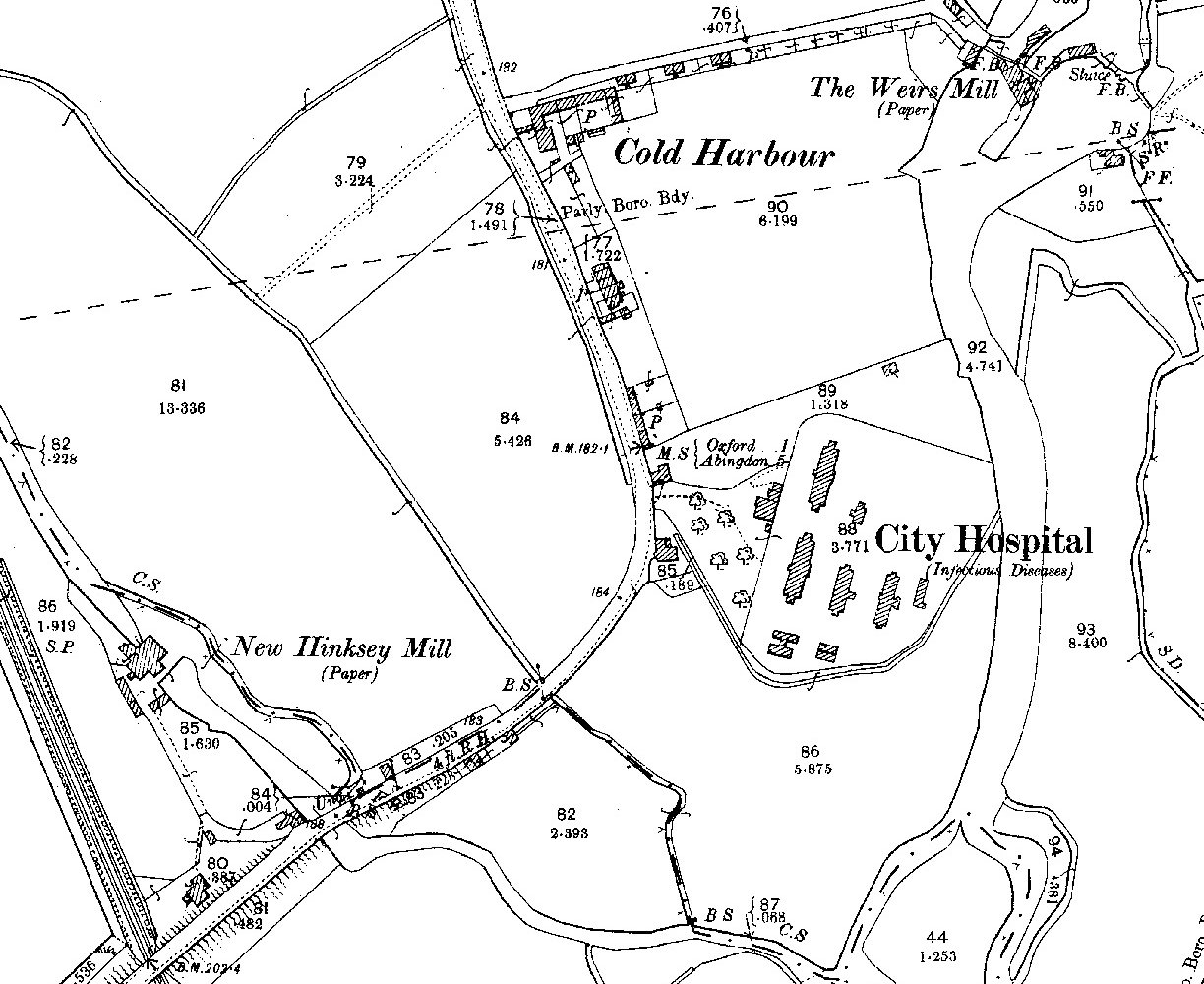
Rivermead Hospital, at the southern end of the Abingdon Road, was originally built in 1884-5, a mile out of the city near Cold harbour, as an isolation hospital for patients with infectious diseases. Like most cities Oxford suffered a series of devastating cholera outbreaks in the 1830s, '40s and '50s. During the first, in 1832, the Radcliffe Infirmary refused to admit cholera patients and a small temporary 'fever' hospital was set up near the canal in Jericho, north of Walton Well Road. It was not until 1871, however, that the city's first purpose-built fever hospital was established, on land on the Woodstock Road (leased from St John's College), just north of where St Margaret’s Road is now.
In the late 19th century Oxford's hospital services expanded rapidly with the foundation of special maternity, isolation, tuberculosis and orthopaedic hospitals and departments, as well as convalescent and nursing homes. St John's wanted to develop its land in north Oxford for middle-class housing, and so when the lease on the fever hospital site came up for renewal, the college decided to take the site back. Hence it became necessary to find a new site for a new fever or isolation hospital to serve the city.
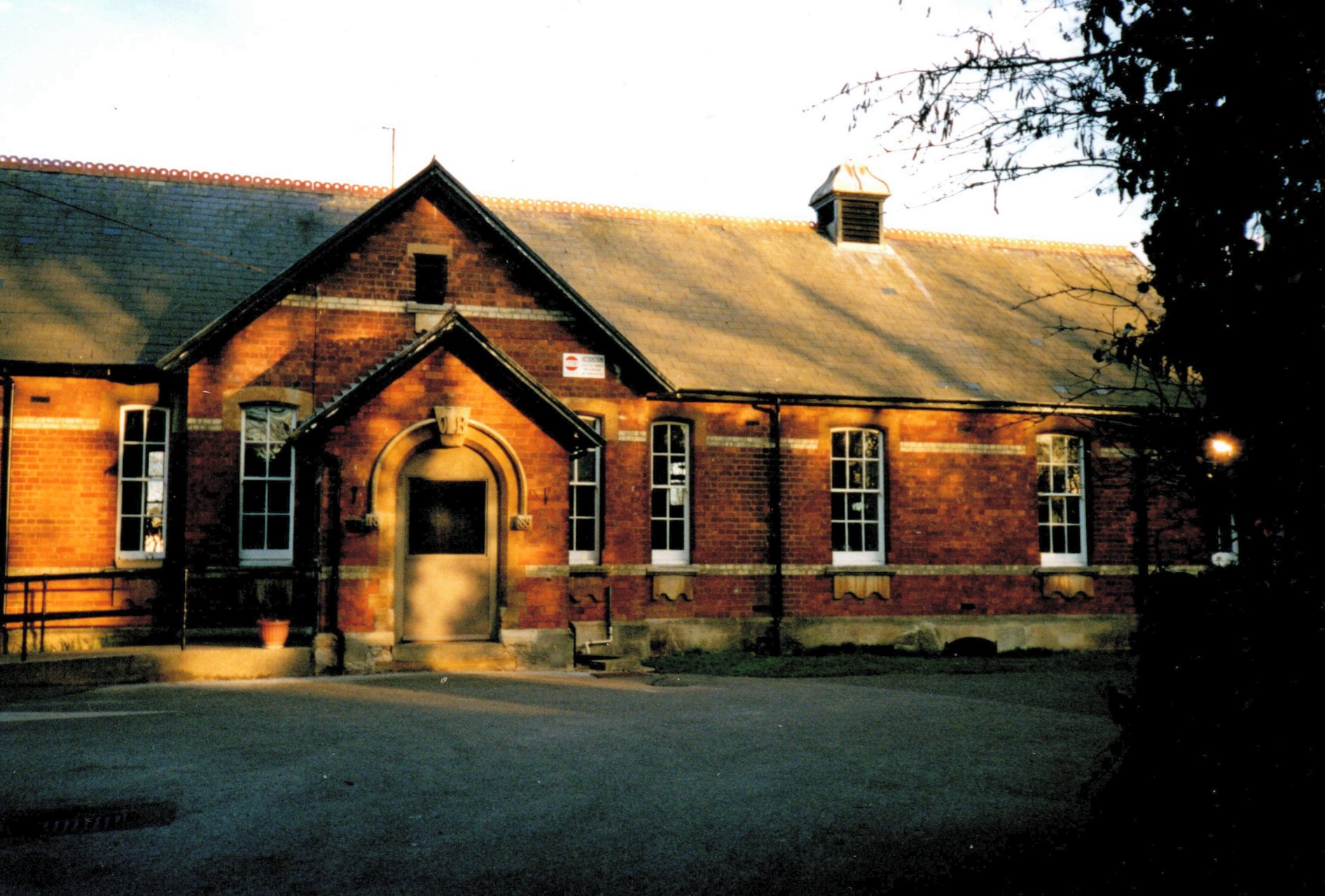
The hospital comprised several pavilions like this one (as can be seen on the map extract above). Above the doorway were the letters 'OLB' for 'Oxford Local Board' and, either side of the doorway, the date '1885'. Image courtesy of Carole Newbigging.
In 1884 the Oxford Local Board accepted the tender of TH Kingerlee, costing £7,258, to build a new Infectious Diseases Hospital at Cold Harbour on the Abingdon Road, to accommodate infectious and fever cases. It was sited opposite a cottage which had been used as a hospital for smallpox victims since 1779, and which later became the Farrier's Arms pub.
The Slade Hospital, which opened in Headington in 1939, was intended to replace the hospital at Cold Harbour, but the outbreak of war made this impracticable. Cold Harbour therefore continued in use, mostly as an additional tuberculosis hospital, supporting the work of the Osler Pavilion in Headington. The Osler took patients who could be treated, whilst Cold Harbour cared for those beyond this stage. In 1954 Cold Harbour ceased to be an isolation hospital and the remaining patients were transferred to the Sunnyside convalescent hospital in Headington. The Cold Harbour site was renamed Rivermead and became a psycho-geriatric centre, linked with the Cowley Road and Littlemore Hospitals. In 1956 it was taken over by Dr Lionel Cosin and renamed the Rivermead Rehabilitation Centre, combining the dual functions of a geriatric unit and a rehabilitation department for young disabled patients. In due course the geriatric aspect ceased and by the late 1960s the hospital was established as one of the leading rehabilitation centres in the country. The services transferred to the Nuffield Orthopaedic Centre when the Rivermead site was given up by the health authority in 2002. Thereafter most of the buildings were demolished and housing was built on the site, with a new road named Gordon Woodward Way after the former Lord Mayor of Oxford for 1980/81, who was on the committee of the hospital for many years, and who died in 2002.
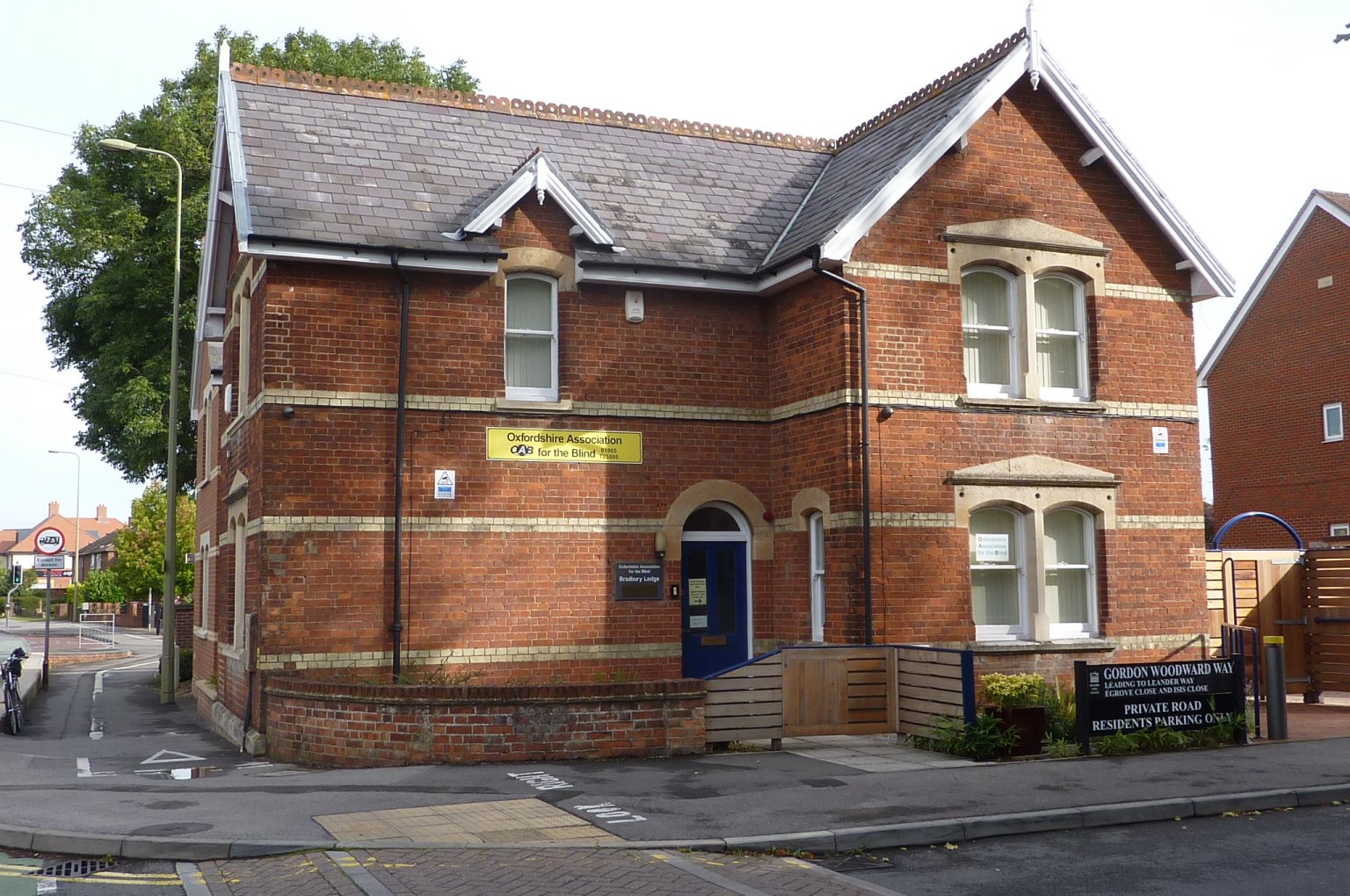
Since 1996 the entrance lodge of the hospital, on the Abingdon Road, has been occupied by the Oxfordshire Association for the Blind.
- Further information about the hospital's history can be found on the Oxfordshire Health Archives website.
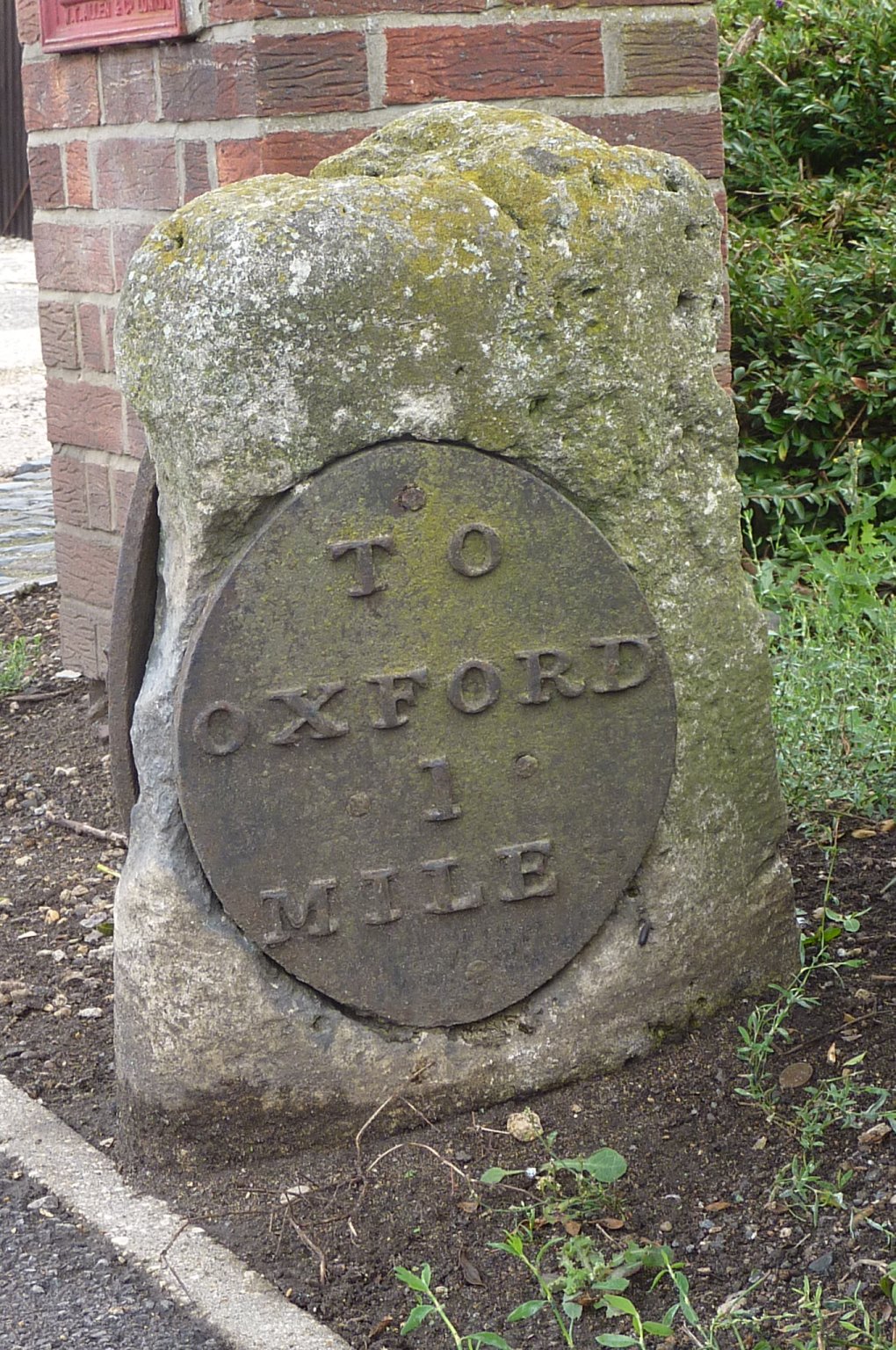
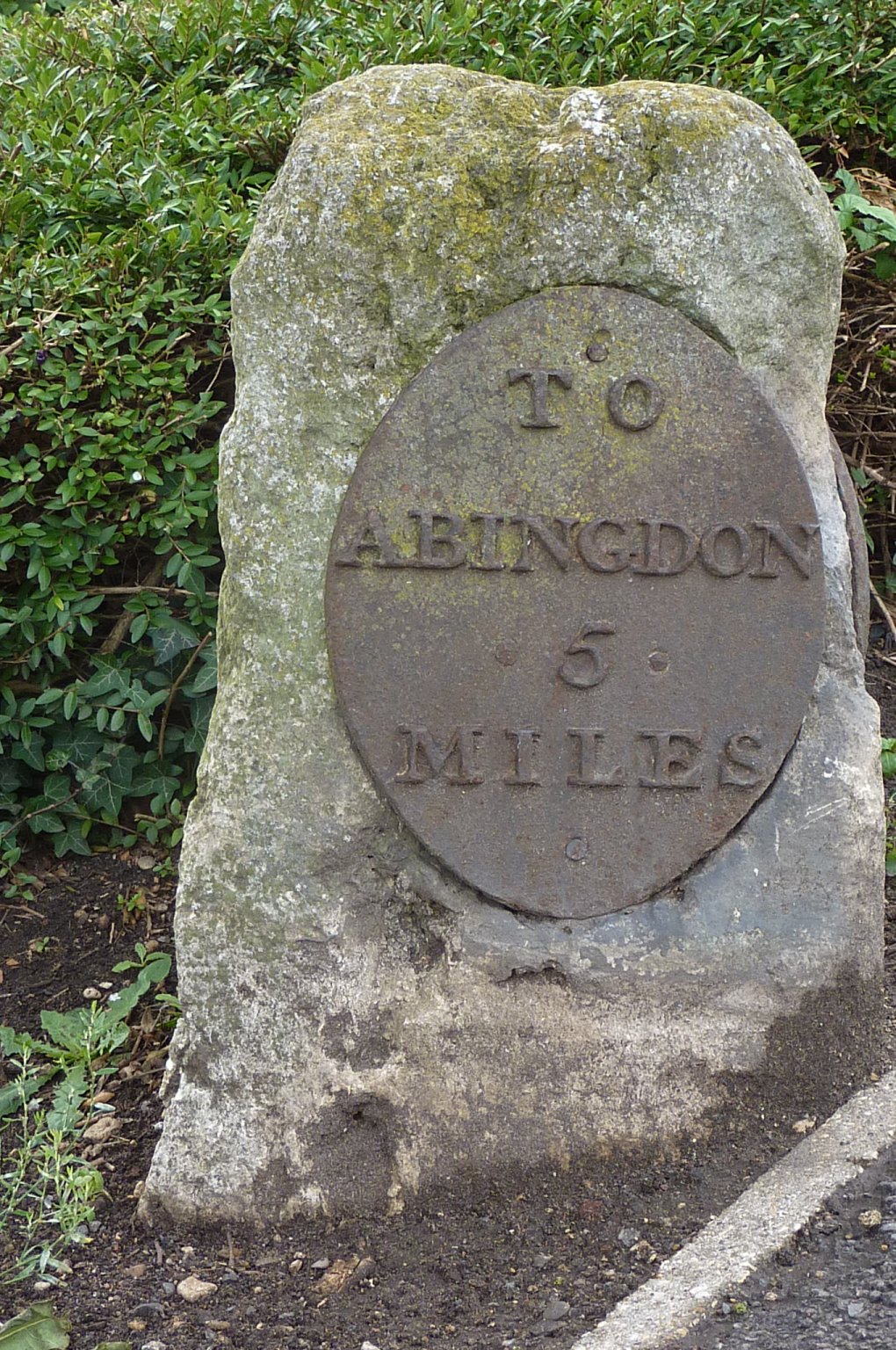
The isolation hospital stood just over a mile out of the city: just to the north of it, near 309 Abingdon Road, is this milestone, which is a Grade II listed structure. The photos show the southern and northern faces of it, and it is marked as 'MS' near the centre of the 1900 Ordnance Survey map further up this page. It also appears on the 1878 OS map, so it must have been in place before then.
- For information about other milestones in Oxford see Stephanie Jenkins's Oxford History website.